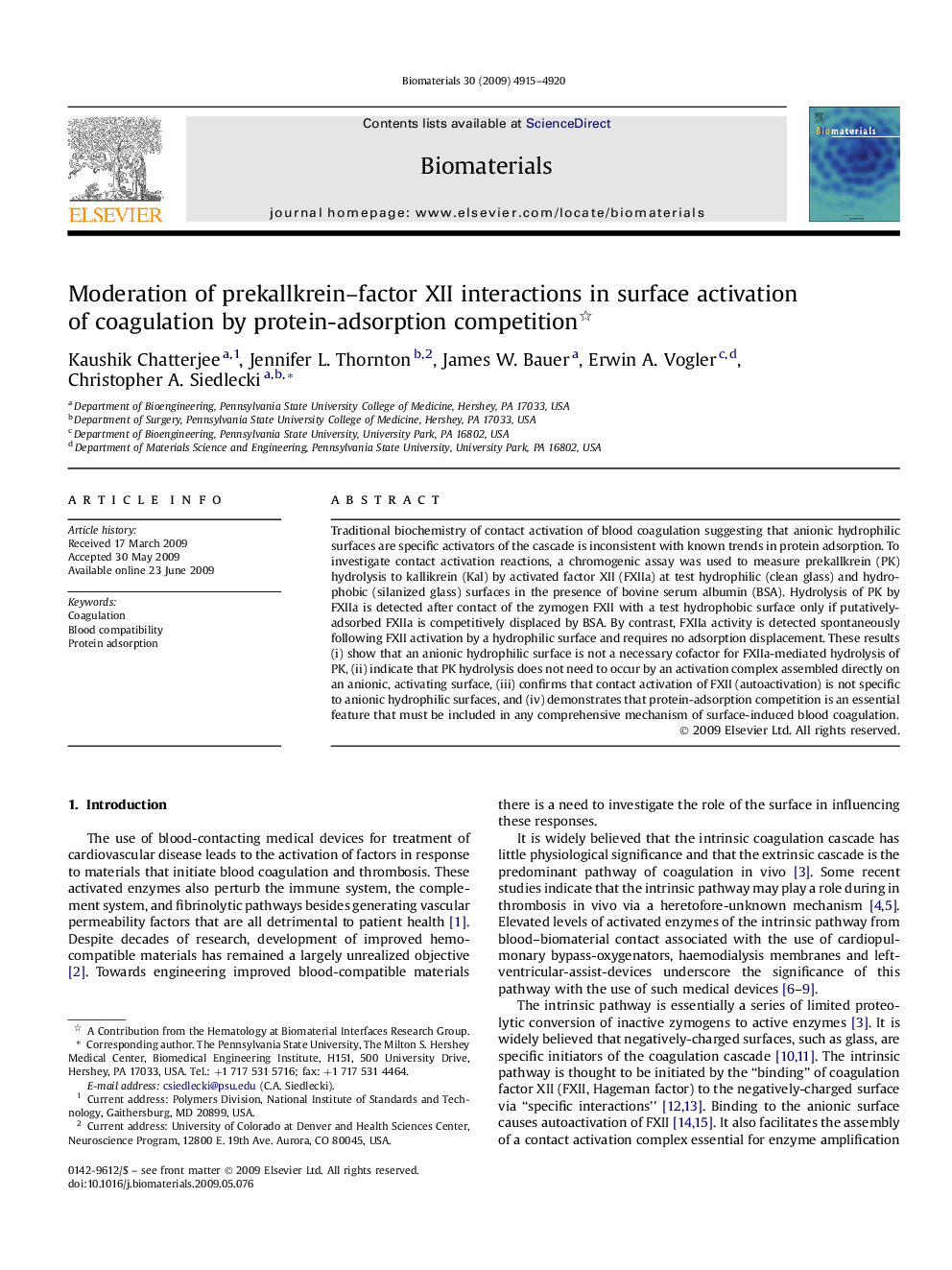| Article ID | Journal | Published Year | Pages | File Type |
|---|---|---|---|---|
| 9025 | Biomaterials | 2009 | 6 Pages |
Traditional biochemistry of contact activation of blood coagulation suggesting that anionic hydrophilic surfaces are specific activators of the cascade is inconsistent with known trends in protein adsorption. To investigate contact activation reactions, a chromogenic assay was used to measure prekallkrein (PK) hydrolysis to kallikrein (Kal) by activated factor XII (FXIIa) at test hydrophilic (clean glass) and hydrophobic (silanized glass) surfaces in the presence of bovine serum albumin (BSA). Hydrolysis of PK by FXIIa is detected after contact of the zymogen FXII with a test hydrophobic surface only if putatively-adsorbed FXIIa is competitively displaced by BSA. By contrast, FXIIa activity is detected spontaneously following FXII activation by a hydrophilic surface and requires no adsorption displacement. These results (i) show that an anionic hydrophilic surface is not a necessary cofactor for FXIIa-mediated hydrolysis of PK, (ii) indicate that PK hydrolysis does not need to occur by an activation complex assembled directly on an anionic, activating surface, (iii) confirms that contact activation of FXII (autoactivation) is not specific to anionic hydrophilic surfaces, and (iv) demonstrates that protein-adsorption competition is an essential feature that must be included in any comprehensive mechanism of surface-induced blood coagulation.
